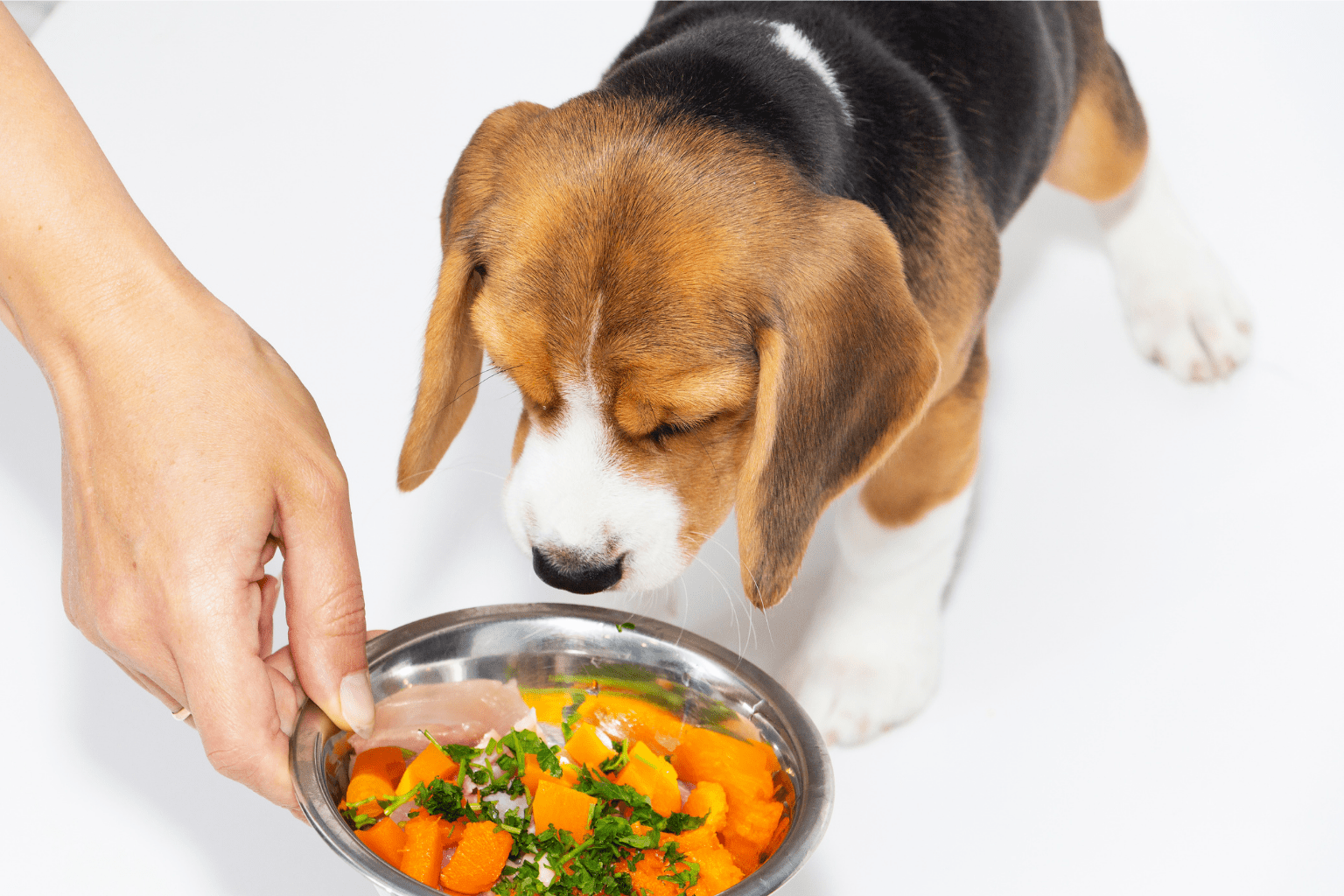Key Takeaways
- Small dogs like Yorkies, Chihuahuas, and Poodle mixes have unique nutritional needs different from large breeds.
- Choosing dog food based solely on packaging is not advisable for small dogs.
- Specialized formulas designed for small breeds better support their health and well-being.
- Understanding your small dog's dietary requirements is essential when selecting the best food.
Table of Contents
- Small Dogs, Big Needs: Why Nutrition Isn't One-Size-Fits-All
- How to Choose the Best Dog Food for Small Dogs
- Comparing Dog Food Options for Small Breeds
- Best Dog Food Picks for Small Breeds
- Troubleshooting: Common Problems & Solutions
- Beyond the Bowl: Keeping Small Dogs Thriving
- Scientific Support & Safety
- Community Spotlight: Small Dog Success Stories
What Dog Food Is Best for Small Dogs?
When you're shopping for your Yorkie, Chihuahua, or Poodle mix, the pet store aisle can feel overwhelming. What dog food is best for small dogs isn't just about grabbing the bag with the cutest packaging, your little companion has unique nutritional needs that big-breed formulas simply can't meet.
Small dogs burn calories at nearly twice the rate of larger breeds, need smaller kibble to prevent choking, and often struggle with blood sugar dips that can turn mealtime into a health emergency. The right food becomes your first line of defense for their energy, dental health, and long-term wellness, especially when paired with targeted supplements for skin and coat health.
As someone who's navigated picky eaters and sensitive stomachs with my late Border Collie mix Tango, I've learned that the best approach combines quality nutrition with gentle, natural support when digestive issues arise. For more guidance on choosing the ideal diet, see this best small dog food resource for additional tips and recommendations.
Small Dogs, Big Needs: Why Nutrition Isn't One-Size-Fits-All
What Counts as a "Small Dog" in Pet Nutrition?
Most veterinary nutritionists classify small dogs as those weighing under 20 pounds at adult weight. This includes popular breeds like Yorkshire Terriers (4-7 lbs), Dachshunds (11-32 lbs for standards), Chihuahuas (2-6 lbs), and Toy Poodles (4-6 lbs). Some manufacturers create "toy breed" formulas for dogs under 10 pounds, recognizing their even more specialized needs.
Unique Nutritional Needs of Small Breeds
High energy needs drive everything about small dog nutrition. A 5-pound Chihuahua needs approximately 40-50 calories per pound of body weight daily, while a 70-pound Golden Retriever needs only 20-25 calories per pound. This means your tiny companion requires more calorie-dense food in smaller, frequent portions.
Smaller stomachs can only hold about 1-2 tablespoons of food per meal for toy breeds. Every bite must pack maximum nutritional value, making ingredient quality non-negotiable. Dental sensitivity also plays a role, small mouths and delicate teeth need appropriately sized kibble to prevent choking while still providing the mechanical cleaning action that supports oral health.
Age and Life Stage: Puppies, Adults, & Seniors
Small breed puppies face unique risks, particularly hypoglycemia (low blood sugar) that can cause weakness, confusion, or seizures. They need 4-6 small meals daily with calorie-dense, easily digestible formulas. Adult small dogs benefit from twice-daily feeding with balanced protein and fat to maintain their active lifestyles.
Senior small dogs (typically 7+ years) require enhanced joint support, antioxidants for cognitive health, and often softer textures as dental issues become more common. Their slower energy levels may mean portion adjustments to prevent weight gain that stresses tiny joints.
Quick Nutritional Benchmarks by Life Stage
- Puppies: 28-30% protein, 15-20% fat, 400-500 kcal/cup
- Adults: 25-28% protein, 12-16% fat, 350-450 kcal/cup
- Seniors: 25-27% protein, 10-14% fat, 300-400 kcal/cup
How to Choose the Best Dog Food for Small Dogs

Step 1, Start with Your Vet
Every small dog brings unique health considerations, from the Cavalier King Charles Spaniel's heart concerns to the Dachshund's back sensitivities. Your veterinarian can identify breed-specific risks and current health status that should guide food selection. Some conditions like kidney disease or food allergies require prescription diets that over-the-counter options can't address.
Step 2, Spot the "Complete & Balanced" Label
AAFCO approval means the Association of American Feed Control Officials has verified the food meets minimum nutritional standards through feeding trials or nutrient analysis. Look for the specific life stage: "for growth and reproduction" (puppies), "for adult maintenance," or "for all life stages." This isn't marketing fluff, it's your assurance of nutritional adequacy.
Step 3, Ingredient Quality Over Hype
The first five ingredients make up the majority of the food. Look for named protein sources (chicken, salmon, beef) rather than generic "meat meal." Quality manufacturers provide transparency about ingredient sourcing, conduct regular testing, and maintain consistent formulations. Avoid foods with excessive artificial colors, flavors, or preservatives that add no nutritional value.
Step 4, Kibble Size, Texture, and Ease
Kibble size matters for safety and enjoyment. Small breed formulas typically feature pea-sized pieces that prevent choking while encouraging proper chewing. Wet food offers easier digestion and higher moisture content, beneficial for dogs who don't drink enough water. For more on the role of grains in dog diets, see why rice is good for dogs and how it can support digestive health.
Comparing Dog Food Options for Small Breeds
Choosing between wet, dry, grain-free, or premium options can feel overwhelming. Each format offers distinct advantages for small breeds, but understanding their practical differences helps you make confident decisions for your little companion's health and happiness.
Wet vs. Dry Food for Little Dogs
Wet food provides superior hydration and easier digestion, making it ideal for senior small dogs or those with dental sensitivity. The softer texture requires less jaw strength while delivering concentrated nutrition in smaller portions. However, dry kibble supports dental health through natural abrasion and offers convenience for busy pet parents.
Many veterinarians recommend combination feeding, mixing wet and dry food to capture both benefits. This approach provides hydration from wet food while maintaining the dental advantages of properly sized kibble designed for small mouths.
| Format | Best For | Hydration | Dental Health | Convenience | Cost per Meal |
|---|---|---|---|---|---|
| Wet Food | Senior dogs, picky eaters | Excellent | Neutral | Moderate | Higher |
| Dry Kibble | Active adults, dental health | Low | Good | High | Lower |
| Combination | Most small breeds | Good | Good | Moderate | Moderate |
Grain-Free vs. Grain-Inclusive
Despite marketing claims, grain-free isn't automatically superior for small dogs. Quality grains like brown rice and oats provide steady energy and fiber that support digestive health. True grain allergies affect fewer than 10% of dogs, with protein sources like chicken or beef causing more reactions than grains.
Recent veterinary research suggests grain-inclusive diets may support heart health better than some grain-free alternatives. Unless your vet diagnoses a specific grain sensitivity, focus on overall ingredient quality rather than grain presence when determining what dog food is best for small dogs. For more details on the latest research, see the FDA investigation into potential links between certain diets and canine heart health.
Premium vs. Budget Dog Foods
Premium foods typically offer higher protein digestibility, better quality control, and more rigorous testing protocols. Budget options may require larger portions to meet nutritional needs, potentially negating cost savings. However, price alone doesn't guarantee quality, some mid-range brands provide excellent nutrition without premium pricing.
Look for manufacturers with transparent sourcing, third-party testing, and strong recall histories. These quality indicators matter more than marketing claims about "premium" ingredients or celebrity endorsements.
Best Dog Food Picks for Small Breeds
After years of supporting pet parents through nutrition challenges, certain patterns emerge in what truly works for small breeds. The best options combine proper kibble sizing, digestible ingredients, and formulations that address the unique needs of little dogs without unnecessary complications.
Best Overall Small Dog Foods
Community favorites consistently feature bite-sized kibble, balanced protein levels between 25-30%, and ingredients that support sustained energy without overwhelming small stomachs. Pet parents report success with brands that prioritize digestibility over trendy ingredients, leading to cleaner eating and more predictable bathroom schedules.
Success stories like Toby, an 8-pound Yorkie who transformed from a picky eater to enthusiastically finishing meals, highlight how the right food combination can restore mealtime joy. His owner credits the switch to appropriately sized kibble and gentle, natural ingredients that didn't upset his sensitive system.
Most Vet-Recommended Formulas
Veterinarians consistently recommend foods with AAFCO approval, clear life-stage labeling, and manufacturers with strong safety records. Clinical factors include protein digestibility scores above 85%, controlled calcium levels for proper bone development, and omega fatty acid ratios that support skin and coat health. For more on supporting your dog's skin and coat, see our Dog Healthy Skin & Coat Remedy for natural support alongside a balanced diet.
Natural support options work alongside quality nutrition to address common small dog challenges. When conventional approaches leave gaps, gentle homeopathic remedies can support the body's own healing processes for issues like digestive upset or stress-related eating problems.
Best for Picky Eaters
Successful transitions for finicky small dogs often involve warming food slightly to enhance aroma, maintaining consistent meal schedules, and choosing formulas with natural palatability enhancers. Smaller, more frequent meals prevent food from becoming stale and maintain interest throughout the day.
Rosie, a rescue Chihuahua mix, went from refusing most meals to eagerly anticipating breakfast and dinner after her family discovered the right combination of texture, temperature, and routine. The key was patience during the transition period and finding a formula that matched her preferences rather than forcing change. For more ideas on keeping mealtime exciting, check out these best Christmas gifts for dogs and cats that can make feeding time fun and rewarding.
Troubleshooting: Common Problems & Solutions

Even with careful food selection, small dogs can develop eating challenges that require gentle intervention. Understanding common issues and practical solutions helps maintain healthy eating habits while addressing underlying concerns that affect your little companion's wellbeing.
If Your Small Dog Refuses to Eat
Food refusal in small dogs can quickly become serious due to their fast energy needs and risk of hypoglycemia. Start with immediate changes: warm the food slightly to enhance aroma, offer hand-feeding to build positive associations, and establish consistent pickup schedules where uneaten food disappears after 20 minutes.
Gradual food transitions over 4-7 days prevent digestive upset while allowing taste adjustment. Mix increasing ratios of new food with familiar options, monitoring energy levels and bathroom habits throughout the process.
Dealing with Overweight Small Dogs
Extra weight strains small joints and organs disproportionately. Use digital scales for precise portion measurement, even a few extra kibbles daily can cause weight gain in tiny dogs. Replace high-calorie treats with food puzzles that provide mental stimulation while controlling intake.
Interactive feeding transforms mealtime into exercise through puzzle feeders, snuffle mats, or hiding small portions around safe areas. This approach burns calories while satisfying natural foraging instincts.
Sensitive Stomachs & Allergies
True food allergies manifest through skin reactions, chronic ear infections, or persistent digestive upset rather than occasional stomach sensitivity. Keep a detailed food diary tracking ingredients, symptoms, and timing to identify patterns before making dramatic dietary changes. If you're curious about what human foods are safe for your dog, see this guide on what human food dogs can eat to avoid accidental triggers.
When digestive issues persist despite quality nutrition, natural support can help restore balance. Gentle homeopathic remedies work alongside dietary management to support the body's natural healing processes without harsh side effects.
Dental Issues & Kibble Challenges
Small dogs often develop dental problems earlier than larger breeds, making kibble size and texture crucial considerations. Softer formulations or slightly moistened kibble can ease chewing while maintaining nutritional benefits. Avoid completely soft diets unless veterinary-recommended, as some texture helps maintain gum health.
Regular dental care prevents eating difficulties before they start. Weekly gentle brushing with dog-safe toothpaste and annual professional cleanings protect long-term oral health and eating comfort. For more on dental and joint health, learn about what is luxating patella in dogs and how it can impact your small dog's mobility and feeding habits.
Beyond the Bowl: Keeping Small Dogs Thriving
Optimal nutrition forms the foundation, but small dogs thrive when their unique physical and emotional needs receive comprehensive attention. Creating supportive environments and routines amplifies the benefits of quality feeding while preventing common health challenges.
The Power of Routine Vet Visits
Small breeds face specific health risks including luxating patella, tracheal collapse, and dental disease that benefit from early detection. Annual wellness exams should include weight monitoring, dental assessment, and breed-specific screenings based on your dog's genetic background. For more information on small breed nutrition, visit this AKC guide to small breed dog food.
Tango's surprise checkup revealed early signs of joint stiffness that weren't visible during daily activities. Catching changes early allowed for gentle interventions that maintained his active lifestyle for years longer than might have been possible otherwise.
Fun Exercise for Small Furballs
Small dogs need proportionally more activity than many owners realize, but their exercise should match their physical capabilities. Indoor obstacle courses, puzzle feeders, and short neighborhood walks provide mental and physical stimulation without overwhelming tiny bodies.
Combining feeding with "job" activities satisfies working instincts while burning energy efficiently. Hide small portions around the house, use puzzle feeders, or practice basic commands before meals to create engaging routines.
Safe & Happy Home
Small dogs benefit from temperature-controlled environments, non-slip surfaces, and appropriately sized spaces that provide security without isolation. Elevated feeding stations can improve digestion while reducing neck strain during meals.
Simple modifications like baby gates to prevent falls, cozy sleeping areas away from foot traffic, and easily accessible water stations support daily comfort and long-term health.
Scientific Support & Safety
Recent research in small breed nutrition emphasizes the importance of calorie density, digestible protein sources, and life-stage appropriate formulations. Studies show small dogs require 40-50 calories per pound of body weight daily, significantly higher than large breed requirements per pound.
Natural support approaches, including homeopathic remedies, may complement quality nutrition by addressing stress-related eating issues, digestive sensitivities, and transition difficulties. These gentle interventions support the body's natural healing processes without interfering with nutritional absorption.
Important: This information is not a substitute for professional veterinary advice. Always consult your veterinarian before making significant dietary changes or if your small dog shows signs of illness or persistent eating problems.
Community Spotlight: Small Dog Success Stories

Real families share their journeys toward better health and happiness with their small companions. These stories highlight how the right combination of nutrition, natural support, and loving care creates lasting positive changes.
Luna the Pomeranian struggled with picky eating and digestive upset until her family discovered the perfect balance of high-quality small-breed kibble and gentle homeopathic support for her sensitive system. Now she eagerly anticipates meals and maintains steady energy throughout the day.
Charlie the Dachshund overcame stress-related eating problems during a family move using consistent routines, familiar foods, and natural calming support. His transformation from anxious meal-skipper to confident eater happened gradually with patience and the right approach.
We invite you to share your own small dog success story with our community. Every journey toward better health deserves celebration and can inspire other pet parents facing similar challenges.
Frequently Asked Questions
What specific nutritional needs make small dog food different from large breed formulas?
Small dog food is specially designed to meet higher energy demands, with more calorie-dense nutrients to fuel their fast metabolisms. It also balances protein, fat, and essential fatty acids to support their unique growth, dental health, and overall well-being, which differ from the needs of larger breeds.
How does kibble size and calorie density impact the health of small dogs?
Smaller kibble size helps prevent choking and makes eating easier for small mouths, while higher calorie density ensures they get enough energy without overeating. Together, these factors support steady blood sugar levels and maintain healthy weight and vitality.
Why do small breed puppies require more frequent meals compared to adult or senior small dogs?
Small breed puppies have faster metabolisms and smaller stomachs, so they need frequent meals to maintain energy and stable blood sugar. This helps support their rapid growth and prevents dips that could cause weakness or discomfort.
What adjustments should be made to a senior small dog's diet to support their aging needs?
Senior small dogs benefit from diets with adjusted calorie levels to prevent weight gain, plus nutrients that support joint health and digestion. Smaller, easily digestible meals with balanced nutrients help maintain their comfort and vitality as they age.



